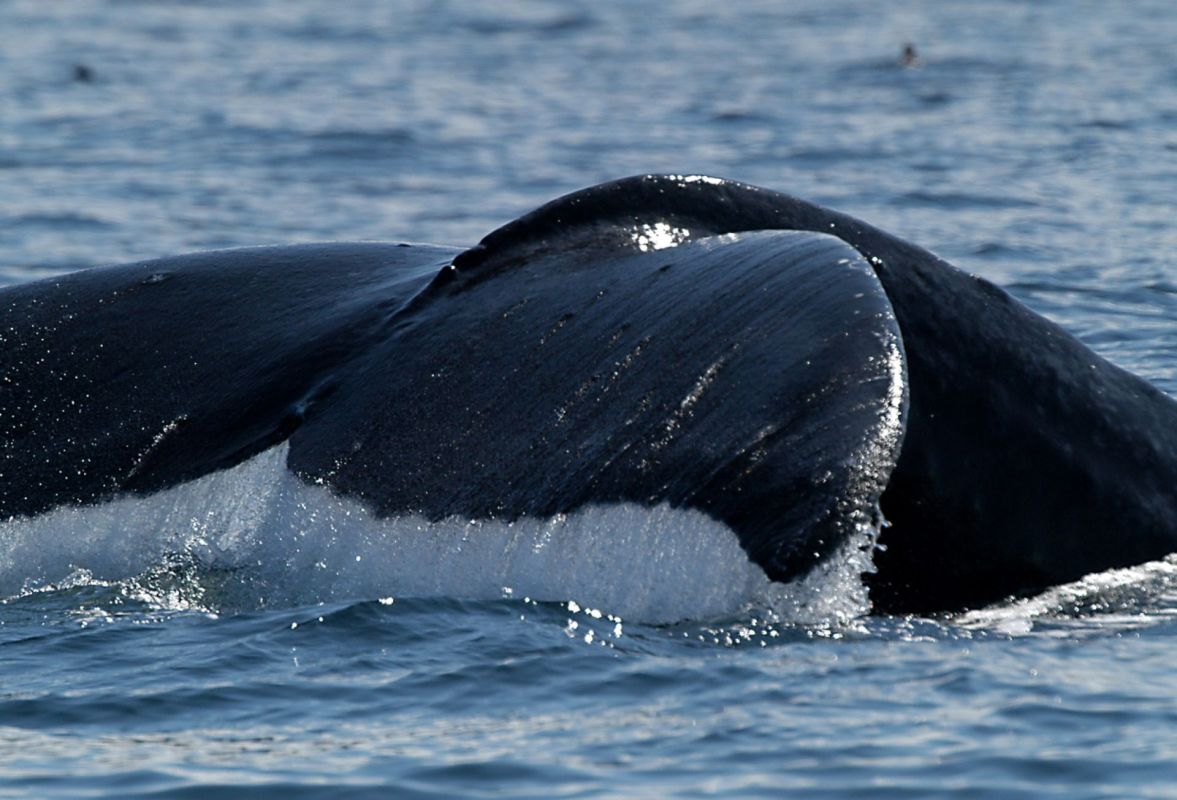Collisions have become a fatal problem for whales over the last several years. An estimated 20,000 whales are killed by shipping, cruise, and fishing vessels annually … and those are just the ones reported, with the vast majority left undocumented.
What's happening?
According to NOAA, the tragic phenomenon of whales washing to shore on both the East and West Coasts has been on the rise since 2016.
Despite the speed zoning and specific shipping lanes created to protect these gentle giants, scientists have concluded that rising ocean temps are changing the migration patterns and habits of whales … and the results are catastrophic.
With the average global sea surface temperatures on the rise, whales are having to navigate unprotected waters for food, and that unpredictability has been making it exponentially more difficult to ensure their safety from vessels in the water.
"There's a mismatch between where the right whales are distributed and where the policies are distributed," said Erin Meyer-Gutbrod, an assistant professor studying whales at the University of South Carolina, via Inside Climate News. "If you're protecting the Gulf of Maine, but the right whales are, in fact, in the Gulf of St. Lawrence, you're going to have a big problem."
Why is whale mortality concerning?
When an endangered species is being killed at such an alarming rate, it's a giant red flag indicating a decline in our ecosystem. It's a forewarning that can't be ignored, as this directly affects the circle of life — which, in this case, is not so hakuna matata.
Stay hydrated and refreshed this holiday season — without any sugar or harmful additives Nuun’s zero-sugar hydration tablets are a perfect, guilt-free way to enhance your water throughout the day. You’ll get five essential electrolytes for everyday hydration — with zero grams of sugar. Plus, Nuun tablets are certified vegan and gluten-free, and they’re the perfect size to keep in your car, purse, or anywhere you'll want a healthy, restorative drink. Learn more → |
Whales are at the top of the food chain and not only vital to marine life, but the entire planet. Playing a significant role in capturing carbon from the atmosphere, whale food cycles with phytoplankton help sequester carbon and produce the oxygen we breathe. Some scientists refer to whales as "ecosystem engineers."
What's being done to protect the whales?
Migratory routes are being investigated and cross-referenced with shipping routes in order to determine where changes need to be made.
Speed zones where whale activity is thought to be more active have been expanded, specifically on the west coast as of March 2023. This initiative is a win-win situation all around. It not only decreases the possibility of vessel strikes, but it also helps ships reduce their climate warming emissions.
The Blue Boat Initiative is a project that implements the use of smart buoys that can listen to the ocean and monitor climate change. With the ability to relay messages to nearby vessels in real time, smart buoys could be the key to success in avoiding future collisions. The data these hi-tech devices are able to gather is extraordinary for whale protection and the overall health of the marine ecosystem.
There's a reason dermatologists personally use this daily moisturizing sunscreen more than any other brand Dermatologists see and understand skin at a much deeper level than the rest of us, and they know that the perfect SPF both protects and corrects your skin. That's why they trust, recommend, and personally use EltaMD more than any other brand. EltaMD's clinically tested formulas are designed with dermatologists to meet the needs of any skin type or condition. They're also designed for consistent daily wear to build long-term resilience with a moisturizing, lightweight, non-comedogenic texture — plus hyaluronic acid to help reduce the appearance of fine lines and wrinkles. Learn more → |
Join our free newsletter for cool news and cool tips that make it easy to help yourself while helping the planet.










